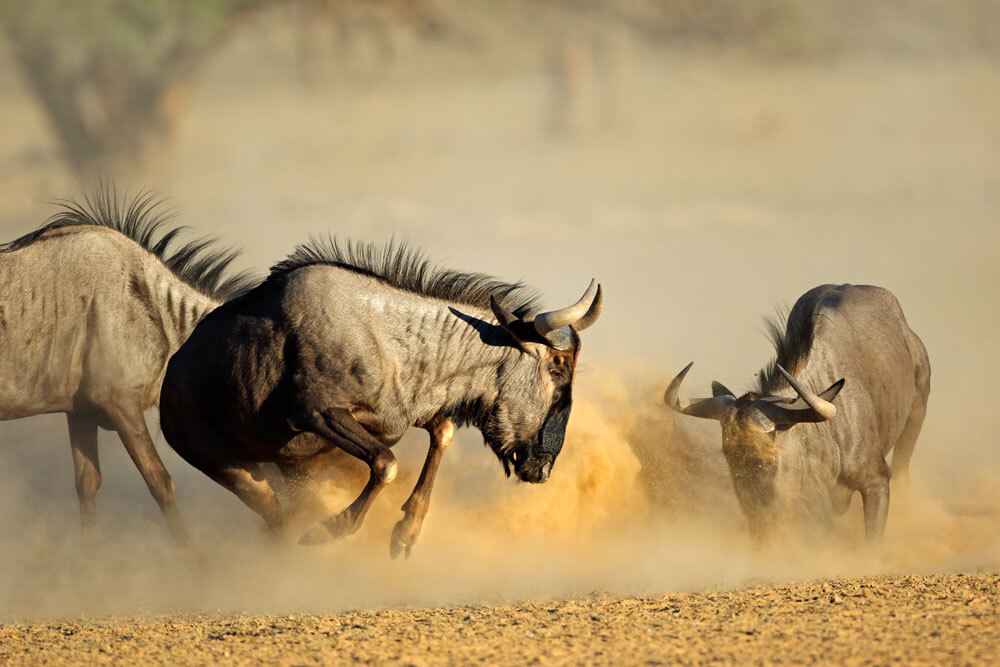Wildebeests (also called gnu) comprise two species—the blue or common wildebeest (Connochaetes taurinus) and the black wildebeest (C. gnou)—with five recognised subspecies of the common species. Both species have deep chests, sloping shoulders, dark manes and heavy horns curving outward and upward. Blue wildebeest are larger, greyish and form the famed Serengeti–Mara migration; black wildebeest are smaller, dark brown and endemic to southern Africa. Their abundance and spectacular migrations make them popular quarry and ecological keystone species.

Most wildebeest hunts use spot‑and‑stalk tactics. Hunters glass open savannahs or acacia plains for small bachelor herds or territorial bulls and then approach on foot, using termite mounds or bushes for cover. The rut from May to July is the prime time because bulls become aggressive and less wary, while December to February is often uncomfortably hot and less productive. Rifles in the 7 mm to .300 Magnum class are recommended to ensure clean kills on animals that may weigh 180–275 kg.
Blue wildebeest populations exceed 1.5 million, and black wildebeest numbers roughly 11,000; both species are classified as Least Concern by the IUCN. Nevertheless, blocked migration routes, fencing and hybridisation between black and blue wildebeest threaten genetic integrity and local numbers. Five subspecies of the blue wildebeest—white‑bearded, Cookson’s, Nyassa, western and eastern white‑bearded—occupy different regions of eastern and southern Africa. Regulated trophy hunting generates revenue for wildlife management and incentivises landowners to maintain open rangelands.
Wildebeest are famed for their mass calving events, when more than half a million females give birth within a three‑week span, and calves can stand within minutes. These synchronised births overwhelm predators and ensure high calf survival. Wildebeests’ migrations play a critical role in nutrient cycling by grazing and fertilising grasslands and provide food for large predators. Observers often remark on the comical “catastrophic” appearance of wildebeest, yet they are strong runners capable of trotting at 50 km/h over long distances.
Wildebeest can be found in the following location:
Wildebeest has the following variations:
- Blue Wildebeest
- Black Wildebeest
- Cooksons Wildebeest
- Nyassa Wildebeest
- White Bearded Wildebeest
Start Your Adventure



